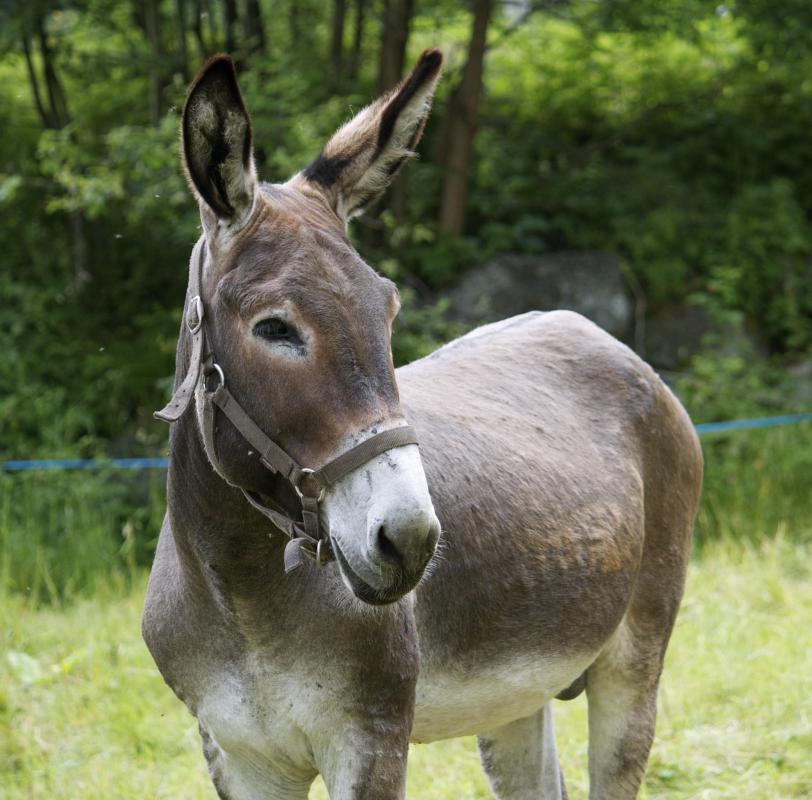At WiseGEEK, we're committed to delivering accurate, trustworthy information. Our expert-authored content is rigorously fact-checked and sourced from credible authorities. Discover how we uphold the highest standards in providing you with reliable knowledge.
What Is the History of the State Flag of Tennessee?
The state flag of Tennessee was officially adopted on 17 April 1905. LeRoy Reeves, a solider in the Third Regiment of the Tennessee Infantry, is credited with its design. The flag features three white stars in a white-ringed, blue circle, on a red backdrop. A thick, vertical blue stripe and a narrower, interior vertical white stripe decorate the far right edge of the state flag of Tennessee, presumably so that the colors red, white, and blue can all be seen on the flag when it is flown. The symbolism of the flag is said to pay homage to the United States of America, while also recognizing Tennessee's vast geographical diversity.
According to flag designer Reeves, the triple white stars depicted on Tennessee's state flag represent the state's three greatly varying geographical regions. Tennessee's easternmost region is located in the Great Smoky Mountains, where large-scale farming is generally impossible and where much of the state's industrial manufacturing can be found. Tennessee's westernmost region consists typically of fertile farmland, and this is where much of the state's large-scale agriculture typically occurs. Tennessee's central region is neither entirely mountainous nor entirely flat, and is considered a good place to raise cattle, mules, and horses.

The colors of the state flag of Tennessee are the same as those of the national flag of the United States, out of respect for Tennessee's allegiance to its nation. The red backdrop of the flag represents the state's loyalty to the United States, while the blue stands for residents' loyalty to the state of Tennessee. The white on the flag stands for the residents' pureness of heart.

A popular myth about the meaning of the Tennessee state flag's design typically states that the three stars on the flag represent Tennessee's status as the third state — after the original 13 colonies — to be admitted into the United States. It is believed that this myth originates from a poorly researched National Geographic article originally published in late 1917. John Trotwood Moore, head of the Tennessee Department of Library, Archives and History in 1920, is considered to have debunked this myth when he interviewed the flag designer, LeRoy Reeves, about his intentions in designing the Tennessee flag with three white stars. Official state records preserve Reeves' geography-based explanation for his design of the state flag of Tennessee.
AS FEATURED ON:
AS FEATURED ON:












Discussion Comments
@Pippinwhite -- I'll look for it! I never noticed that before, but the next time I run across the movie, I'll definitely look for that scene and the flag in the background.
Maybe the producers figured no one would notice the flag, or that the people most likely to see the movie wouldn't know what the Tennessee state flag looked like. I've heard the movie was made on a tight budget though, so that may have just been the prop they had on hand and they hoped no one would notice it.
Here's an interesting tidbit about the Tennessee state flag. Remember the scene in "Animal House" where the Deltas are on trial in front of the council? The flag on the stand in the background is a Tennessee state flag. I don't know if this was deliberate, but the movie certainly wasn't set in Tennessee, that I recall.
Since I'm from Alabama, I've seen the Tennessee flag before and I knew that's what it was. I've had a lot of laughs with my friends about the Tennessee state flag ending up in "Animal House." I don't know why they did it, or if that's just the first flag they could get their hands on, but it's there.
Post your comments